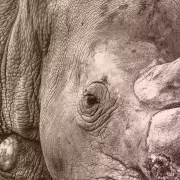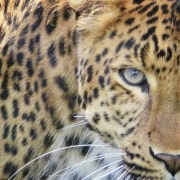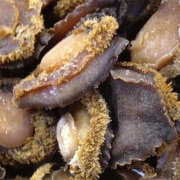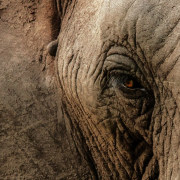|
Getting your Trinity Audio player ready...
|
At the beginning of August, the Organized Crime and Corruption Reporting Project (OCCRP) published a disturbing insider account of the global criminal trade in birds. An organised crime group – one of many in existence – smuggled rare birds from Asia and South America to willing buyers in Europe, making millions in profit but carelessly causing the deaths of hundreds of the feathered victims.
The OCCRP piece is based on the personal experiences of Ukranian veterinarian and former bird smuggler Stanislavas Huzhiavichus, who spoke to the investigative organisation. Huzhiavichus was caught in Vienna in 2018 and served four months in an Austrian jail before returning to his Ukranian home.
He told OCCRP that smuggling birds is far more profitable than drugs or arms. “Smugglers of narcotics and weapons, they don’t know about the better business – of course it’s the business with animals.”
The global trade in wildlife, fisheries and forestry is well documented and represents an increasing source of profit for criminal groups, said Jorge Rios, head of the UN Office on Drugs and Crime’s global programme for combating wildlife and forest crime, in March 2021. Corruption plays a big role in the prevalence of trafficking routes, and the whole illegal industry carries an estimated annual value of US$7-billion to $23-billion.
Such crimes also fuel environmental degradation, including the destruction and illegal exploitation of forests, wildlife, and marine resources, contributing to biodiversity loss and climate change.
This is the lucrative industry in which Stanislavas Huzhiavichus became caught up, after responding to a post on his university’s Instagram group, asking for the help of qualified vets who wanted to work with exotic animals. At first he worked as a vet, trying to keep the birds alive, and then became a courier.
CITES no obstacle to traffickers
Huzhiavichus was recruited in Kyiv, Ukraine, and spent about a year with the group.
“They said they were breeders, and they have a shop with rare animals,” he recalled in a video interview with OCCRP. Cages in the windowless basement of a commercial property, to which he was taken during his first meeting with the group, held many bird species, such as palm cockatoos, types of birds of paradise, and eagles.
All were rare birds, he said. As such, they would have been protected under the Convention on International Trade in Endangered Species of Wild Fauna and Flora (CITES) – but in the OCCRP interview Huzhiavichus claimed he was unfamiliar with CITES at the time, and knew nothing about the status of the birds.
As part of its regulation of the wildlife trade, which does provide for the legitimate trading for profit of around 38 000 protected species, CITES issues permits for each animal which crosses an international border. Each permit is unique to the individual subject – but they are easy to falsify or duplicate, and border officials struggle to tell the difference between a real and a fake permit, or indeed, between one type of bird and another.
Because of this loophole, Huzhiavichus said, traffickers can use the same permit “over and over again.” These include permits or copies of permits that were issued to legitimate organisations.
Other methods used to bypass CITES included counterfeiting the tiny rings fitted to juvenile captive-bred birds, which may be legally traded under the convention. The rings are too small to be fitted to an adult bird but the group used bigger rings and merely tightened them to make them look like the genuine article.
Deadly journey
The birds were sourced from places such as Indonesia and Papua New Guinea, and arrived in Ukraine via various routes. Many did not survive.
Huzhiavichus described one tragic incident where 300 little green parrots arrived at the basement location – but only seven were still alive when the box was opened.
“It’s not a pretty place,” he said, “but if you came now you would see the same story.”
Because the profit on successful sales was so high, a few (hundred) deaths here and there made little difference to the bottom line.
It took Huzhiavichus a while to realise what type of operation he was really working for. The birds’ well-being was on his mind, and he convinced the boss to put in windows and provide a better diet for the little captives. When survival rates began to improve, he was put in charge of the birds’ health.
This still did not sit well with him. After he complained to the head of the operation, he was given a new job as courier – earning €1 000 for a route. He was to arrange transport, take the birds with all the documentation, and deliver them to the buyers.
The thousand euros was his personal cut – each trip earned the group an average of around €50 000, and as much as €140 000.
“If you are unscrupulous, you can just go to Indonesia, buy that palm cockatoo for $500 and sell it in Europe for $16 000,” Huzhiavichus told OCCRP reporters. “It will pay off like 34 times for one bird. And if you bring 10 birds … This is a very simple way to easily and quickly make a lot of money — astronomical money.”
With few expenses for the smugglers, the money was very good. “This business really does not require anything. You need some connection with customs … and a little money, a few thousand euros, and that’s all.”
Ukranian smugglers use either cars or trains, he said. “For trains, you speak to the conductors and they will take anything you want – narcotics, animals, or whatever – for one or two hundred euros.”
Once the birds had arrived at their destination, he would simply pick them up at the train station and deliver them to their buyers.
Travel by car involved payments to corrupt border officials on the way into Slovenia.
Wide network of clients
His boss had clients all over Europe and protected his network with a plethora of security cameras around the basement, the use of fake names, and always keeping his true location secret. He also told false stories about his personal life, and communicated via WhatsApp.
Asked why the boss did this, Huzhiavichus said, “Because it’s not legal work. If the police speak with me, I could give all that information.”
Some of the clients purported to be conservationists, but many were simply ultra-rich people who wanted to own exotic animals. Even today, such possession is a symbol of status, no matter how costly it might get. It can sometimes become an obsession, though the animal is rarely the one that benefits. On social media, rare and beautiful animals are as share-worthy as Bugattis, designer luggage, and luxury yachts.
“Some rare-animal aficionados register their collections as zoos, which comes with tax breaks and easier access to rare, CITES-listed species,” the OCCRP notes – but this can often pose a danger to residents and animals in the same areas. Just in the UK, there are more than 300 licensed zoos, but most of them are private. Only about 100 belong to professional associations that require them to be regularly open to the public.
Huzhiavichus was finally caught when one of his Austrian buyers turned out to be an undercover police officer. The authorities opened two cases against him – one for the palm cockatoos and one for the birds of paradise he was ferrying. He was acquitted on a technicality on the cockatoo case, and ultimately spent four months behind bars in Austria in 2018. By the time the prosecutors’ appeal against his release in the first case came to court, he had already returned to Ukraine.
Today he lives in Kropyvnytskyi, central Ukraine, where he runs a small shelter for birds. When Russia invaded its smaller neighbour earlier in 2022, Huzhiavichus stayed in the city to look after his little charges.
He told OCCRP that he is done with the bird smuggling trade.
Corruption facilitates wildlife crime
Corruption plays a major role in the proliferation and persistence of the illegal trade in wildlife, forests and fisheries. It is present in illegal payments to get hunting licenses to be used for poaching, to secure preferential treatment or manipulate court decisions, or to obtain fraudulent export certificates. It is present in the bribery of game reserve and forest patrol officers, of customs officials who will turn a blind eye to trafficking, and of police officers and prosecutors to avoid investigations. In addition, says Transparency International, corruption and weak regulatory frameworks may offer several opportunities to criminal organisations to launder the proceeds of crime.
The illegal wildlife trade has grown to become the fourth largest illicit transnational activity in the world, according to NGO TRAFFIC, which works globally to monitor trade in wild animals and plants in the context of both biodiversity conservation and sustainable development.
This alarming increase not only threatens the very existence of many species in the wild, but it also impoverishes communities, and harms humans. Several reports, including one released in March 2021 by the World Health Organization, suggest that the Covid-19 pandemic was a probable consequence of the illicit wildlife trade – although a definite conclusion has not yet been reached as more research is needed.
Illegal trade in fauna and flora has also been linked to the spread of communicable diseases, and is a threat to our health, says the UN Environmental Programme. It must be noted, though, that the legal trade also contributes to the spread of diseases, by providing “disease transmission mechanisms at levels that not only cause human disease outbreaks but also threaten livestock, international trade, rural livelihoods, native wildlife populations, and the health of ecosystems,” according to research conducted as far back as 2005 by the US-based Wildlife Conservation Society.
And of course, there is ever-present danger to activists, environmentalists and eco-defenders who protect the land and the creatures that depend on it.







